Why is southern Italy so much poorer than northern Italy, and why it will remain that way.
Why is southern Italy so much poorer than northern Italy, and why it will remain that way.
The poverty that exists in southern Italy is in stark contrast to the wealth on display in the north. Most tourists never make it much farther south than Rome. If they did, they would be surprised at how rural and impoverished southern Italy is. The persistent economic disparity between Southern and Northern Italy is due to a number of factors that we will explore. I believe this stark disparity in wealth will continue for the foreseeable future.
It's worth noting that Italy is relatively wealthy country, and the poverty of the south is relative, when all things are considered. Sicily, Italy’s poorest province, has a similar Human Development Index score to Slovakia, Hungary, and Puerto Rico.
Geographical Factors:
Let’s consider the topography of Italy. To the north of Italy you have the Alps, the highest and most extensive mountain range in Europe. Most of Italy’s water comes from the Alps. From the western Alps flows the Po river to the Adriatic Sea. The Po River has one of the longest contiguous flows surrounded by flat, fertile land in Europe. 17 million people, or about a third of the total population of Italy, live in this area. The rich fertile farmland of the Po valley contributed to north being wealthier. Richer areas of Italy overlap with the Po river. Perhaps, just as important as fertile land, is the transport afforded by a large river. The Po River gave the valley access to both Genoa and Venice which were major port cities since the Middle Ages, facilitating trade with the east.
It cannot be overstated the impact naval trade had on northern Italy as it was a significant driver of economic activity in the late Middle Ages and renaissance. Venice and Genoa exerted considerable control over Mediterranean trade. They possessed exclusive rights to Constantinople and the Black Sea. They were employed by crusading armies to ferry troops to the middle east.
Historically, the Kingdom of Naples dominated the south in contrast to the north which was organized into various mercantile city states that competed against one another. The cities of Rome, Florence, Milan, and Genoa are all in the North. The south only has Naples. Typically, Italians divide their country in north, central, and south. In which case, Rome and Florence may be considered central Italy. However, for our purposes, we will divide the country into north and south.
The south does have some fertile areas, but more importantly, it has several good ports which are conducive to trade. The cities of Naples, Palermo, Catani, and Bari all have a combination of good ports and fertile land which would lend itself to be a fairly well off and populated region or city.
Due to the heat and oppressiveness of the midday sun, southern Italy, as well as most areas with a similar climate and geography, tend to take off during the time the sun is hottest, returning to work in the evening. In contrast, northern European work cultures tended to work a continuous period from morning to early evening.
Historical Context:
Italy was unified under the Roman Republic in the third century BC, and remained realtivley whole even after the fall of the Roman Empire under the Ostrogoths until it became disputed between the Kingdom of the Lombards and the Byzantine (Eastern Roman) Empire.
Italy was a divided nation from Justinian in the 500s to Napoleon in 1798. The north largely existed as small independent city-states, while the south was ruled as a territory of a distant emperor.
The first Holy Roman Emperor, Charlemagne, conquered northern Italy, as far south as Rome, but his southern campaign failed to make lasting gains. The Holy Roman Empire continued to rule Northern Italy for hundreds of years while not making permanent gains in the south which was held by the Byzantine empire, and occasionally Islamic forces.
Southern Italy was subjected to destruction and devastation repeatedly as warring empires and nations fought over it
Historically, the cities of Genoa, Venice, and Florence were economic power houses during the late medieval and renaissance period. Wealth accumulated and spread across the regions closest to these cities. When the industrial revolution arrived in Italy, investment in workshops and factories occurred primarily where that wealth was found: northern Italy. It is worth mentioning that the lack of a unified Italy was a factor in preventing the spread of wealth and investment in the south. However, I would argue even if Italy was unified before the industrial revolution, the wealth and investment still would have heavily concentrated in the north, and this great north-south disparity would still have persisted.
Eventually, northern Italy was overshadowed by Spain, the Netherlands, and Britian due to their grip on global trade. Italy lagged the rest of the developed world, and was in a state of turbulence and upheaval, until its reunification in 1871.
The importance of finance in modern civilization cannot be understated
Reunification:
I would be remiss if I did not acknowledge that Italian reunification caused widespread destruction of southern Italy in contrast to the north that was largely left intact.
Italian unification was conducted primarily by the northern state of Sardinia-Piedmont with its capital in Turin. This kingdom was composed of what is now southeastern France. It was more aligned with northern Europe than the Mediterranean. The money and investment would naturally flow around the capital. Southern Italy was not keen on reunification, especially by another state. They desired to be in control of the process if it was going to occur. Arguably, the south was punished in a way by receiving little investment.
It is worth considering the economic disparities between what was formerly eastern Germany versus western Germany. Germany arguably handled the merging of the country better than Italy, and yet dramatic disparities still persist.
The south is more agrarian because it was run as a feudal state
Industrialization:
The industrial revolution began in Britian and flowed out of London to aligned nations and areas that had close cultural and economic ties.
Northern Italy is relatively industrialized. In fact, industry was the only path to some level of prosperity given Italy’s lack of natural resources and fertile land with the exception of the Po Vallye.
In contrast to the north’s industrial orientation, the south has primarily been an agricultural economy.
Silk production was an important economic driver of northern Italy in the early twentieth century.
Emigration and Brain Drain:
Arguably, a country’s greatest resource is its people. The drain of human capital out of southern Italy to the Europe and the Americas significantly hindered development of southern Italy.
Southern Italians have immigrated to both northern Italy, and the rest of the world, for hundreds of years in search of opportunities and a better life. Perhaps this is why southern Italian cuisine is so globally widespread. Consider the prevalence of tomatoes in Italian American cooking.
Discrimination:
Southern Italians faced discrimination in the United States partly due to their darker skin tones and adherence to Catholicism. Northern European Protestants were more quickly assimilated into the United States.
Many of the Italian immigrants to America were from southern Italy. When American soldiers arrived in Italy during world war 2, many of there men were second generation Italians that were better educated and more successful than the northern Italians they liberated.
There is a vicious circle whereby underperformance in southern Italy leads to lack of investments, which further fuels more underperformance.
Northern Italians are known to have several derogatory terms for southern Italians considering them uneducated and rural people.
The Role of the Mafia:
The mafia is not the root cause of poverty in Southern Italy, but is rather a symptom of wider socioeconomic factors. However, it can be argued that the mafia contributes to continued under-investment and impoverishment in southern Italy. Some people would claim that the mafia is a substitute for a government in places where the legitimate government has failed.
Conclusion:
The persistent economic disparity between southern and northern Italy is a complex issue shaped by geographical, historical, and social factors. While the south possesses some fertile land and favorable ports, a lack of investment and historical circumstances have limited its economic development. Discrimination, emigration, and the presence of the mafia further perpetuate this divide. To address this disparity, concerted efforts are required to promote economic opportunities, invest in infrastructure, and foster social integration between the regions. Only through such comprehensive measures can Italy hope to bridge the economic gap and unlock the true potential of the nation as a whole.
Works Cited:
https://www.forbes.com/sites/cathyhuyghe/2022/02/28/from-silk-worms-to-prosecco-snapshot-of-northern-italian-history/?sh=2c357d615969
https://academic.oup.com/book/7358/chapter/152142375?login=false
Tags:
italy, italy economy, the economy of italy, economy, economy of italy, italian economy, the economy of italy explained, italy economy explained, brothers of italy, the economics of italy, italy's economy, italy economic crisis, italy economy economics explained, italy economic problems, economic, cons of italy, italy economics, collapse of italian economy, italy news, how italys economy works, the economy of milan, italy, southern italy, why is southern italy poor?, south italy, why is southern italy much poorer than northern italy?, why is south of italy poor, why is the south italy poor, why south italy is poor, why is southern italy not rich?, why is the north of italy so much richer than the south, difference between northern and southern italy, why is the economy of southern italy weak?, northern italy, living in italy, why is north italy richer, italy is poor
-
 0:59
0:59
Travel8990
10 months agoVisit to Historical Italy: Rome
1071 -
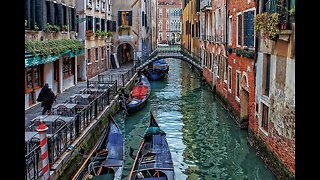 0:58
0:58
Travel8990
10 months agoVenice city Italy❤️🇮🇹
30 -
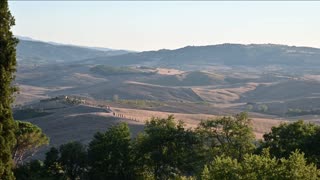 0:11
0:11
Scenic Relaxation Films
2 years ago $0.02 earnedThe most beautiful regions in Italy
421 -
 12:18
12:18
The Wonders of the World
11 months agoThe Wonders of Sicily
132 -
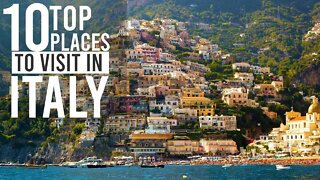 8:24
8:24
ItalyTravel
1 year agoTOP 10 BEST PLACES TO VISIT IN ITALY
97 -
 0:57
0:57
Maiorianus
1 year agoWere the Barbarian invaders of Rome actually friendly?
51 -
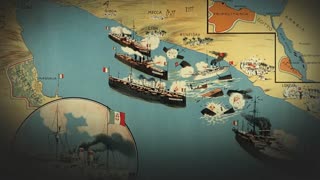 9:28
9:28
5Crown
1 year agoItalian Turkish War When Libya Becomes an Arena for Disputes
262 -
 4:50
4:50
World War Stories
7 months agoThe Epic Battle of Caporetto - Surprising Tactics, Italian Resilience, and Shifting Tides
37 -
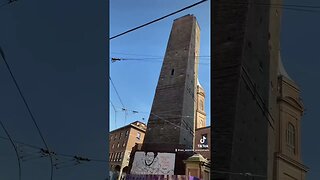 0:19
0:19
Destination: Everywhere
1 year agoRECAP Bologna | Italy
16 -
 22:16
22:16
Maiorianus
1 year agoThe Roman Empire would not have fallen if these decisions were made differently.
5051